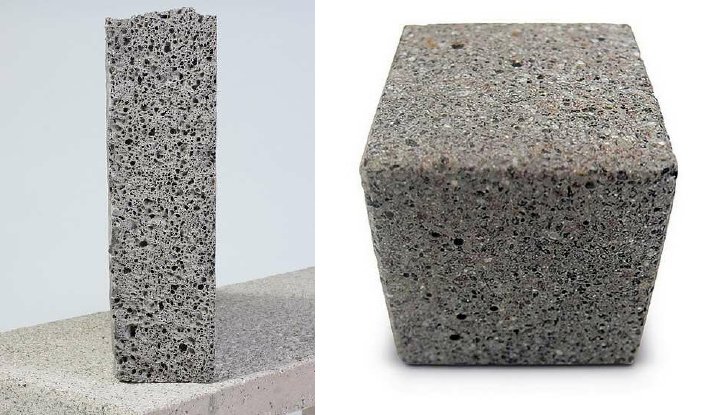Professional solutions on concrete addtives, Concrete Foaming Agent, Superplasticizer, CLC Blocks Additives, and foaming machine
(The workability of Concrete Crack Reducing Admixture)
What Concrete Crack Reducing Admixture
Concrete cracking is typical and often occurs during the curing process. The correct concrete mixture, temperature, and curing process can reduce cracks. Concrete cracks less than 0.3 mm wide will not impact the structure and strength. Proper installation by a professional contractor prevents cracking. While traditional shrinkage management methods typically involve adding more water to the concrete mix, shrinkage-reducing admixtures offer a much more effective solution. By reducing the amount of water that can evaporate from the concrete, these admixtures can help to prevent the formation of cracks and other defects. In floor slabs, the joint spacing can be increased due to the reduced concrete movement during drying. The risk of the slab curling at joints and edges is also significantly reduced. Shrinkage-reducing admixtures will not adversely affect the workability of concrete. The amount of liquid admixture must be a portion of the mixing water, however. These additives can occasionally inhibit the development of both early and late strength. A maximum strength reduction of 12 to 15% after 28 days is possible using the appropriate dosages. However, this will depend on the type of admixture used. Therefore, formulated admixtures may contain additional co-surfactants and hydrotropic compounds to mitigate the loss of hydrophobic compounds through phase separation, self-aggregation, or surface aggregation, decreasing the capillary stress and shrinkage induced by drying. Latex-based products, including Sakrete Crack Filler and Sakrete Concrete Repair, offer good performance – suitable for cracks up to 3/8" deep and 1/2″ wide. Latex-based products provide easy clean-up and will last a few years, depending on application conditions. In the case of superplasticizers, stable combinations of polymeric dispersants and water-insoluble defoamers are based on adding co-surfactants that provide sufficient solubilization. Yes, admixtures affect the strength of concrete. Through their water cement reduction, hydrophobic effect, pore reduction, blocking, and functionalities, the strength and durability of the concrete are considerably improved.
Effects of a New Type of Shrinkage-Reducing Agent on Concrete Properties
The SCA did not reduce the autogenous shrinkage of the concrete but reduced the drying shrinkage when the maximum dosage was used. Surface coating EN slightly reduced autogenous and drying shrinkage. Also, incorporating fibers reduced the autogenous shrinkage and the cracking potential. The SRA, SCA, fibers, LS, and EN do not adversely affect concrete's strength and elastic modulus. The free shrinkage strain of concrete with N-SRA (Concrete-N) and C-SRA (Concrete-C) as a function of time. The inclusion of SRA reduced the shrinkage by approximately 50% compared to that of the reference. Both N-SRA and C-SRA showed the same degree of shrinkage reduction, even though N-SRA required only half the dosage of C-SRA. However, N-SRA was ineffective at reducing surface tension. In the study by Rougelot, autogenous shrinkage was controlled by desaturation. Beams were left in a controlled environment, and humidity was lowered from 100% to 12% over the following months. It was determined that slopes of the shrinkage curves decrease with decreasing humidity and that higher water-to-cement ratios lead to increases in desiccation shrinkage and porosity.
The workability of Concrete Crack Reducing Admixture
Restrained autogenous shrinkage in high-strength concrete can produce stresses during the early ages that may cause premature cracking. This was shown by Igarashi et al. It was also found that when the ratio of restraint-induced internal stress to tensile strength approached 50%, premature cracking began to occur, leading to tensile failure. Darquennes et al. ( 15) found that the shrinkage cracking occurred later than the Portland cement concrete in the case of slag cement concrete. In addition, the fibers proved efficient in significantly reducing the drying shrinkage-induced cracking. Kawashima and Shah analyzed the behavior of cementitious materials with cellulose fibers under sealed and unsealed conditions. Sealed conditions simulate autogenous shrinkage, and the unsealed condition mimics dry shrinking. The cellulose fibers also provided some internal curing, and the improved distribution of the fibers resulted in more desirable properties.
Price of Concrete Crack Reducing Admixture
Concrete Crack Reducing Admixture particle size and purity will affect the product's Price, and the purchase volume can also affect the cost of Concrete Crack Reducing Admixture. A large amount of large amount will be lower. The Price of Concrete Crack Reducing Admixture is on our company's official website.
Concrete Crack Reducing Admixture supplier
If you are looking for high-quality concrete additives, please feel free to contact us and send an inquiry. (sales@cabr-concrete.com). We accept payment via Credit Card, T/T, West Union, and Paypal. TRUNNANO will ship the goods to customers overseas through FedEx, DHL, by air, or by sea.
(The workability of Concrete Crack Reducing Admixture)








